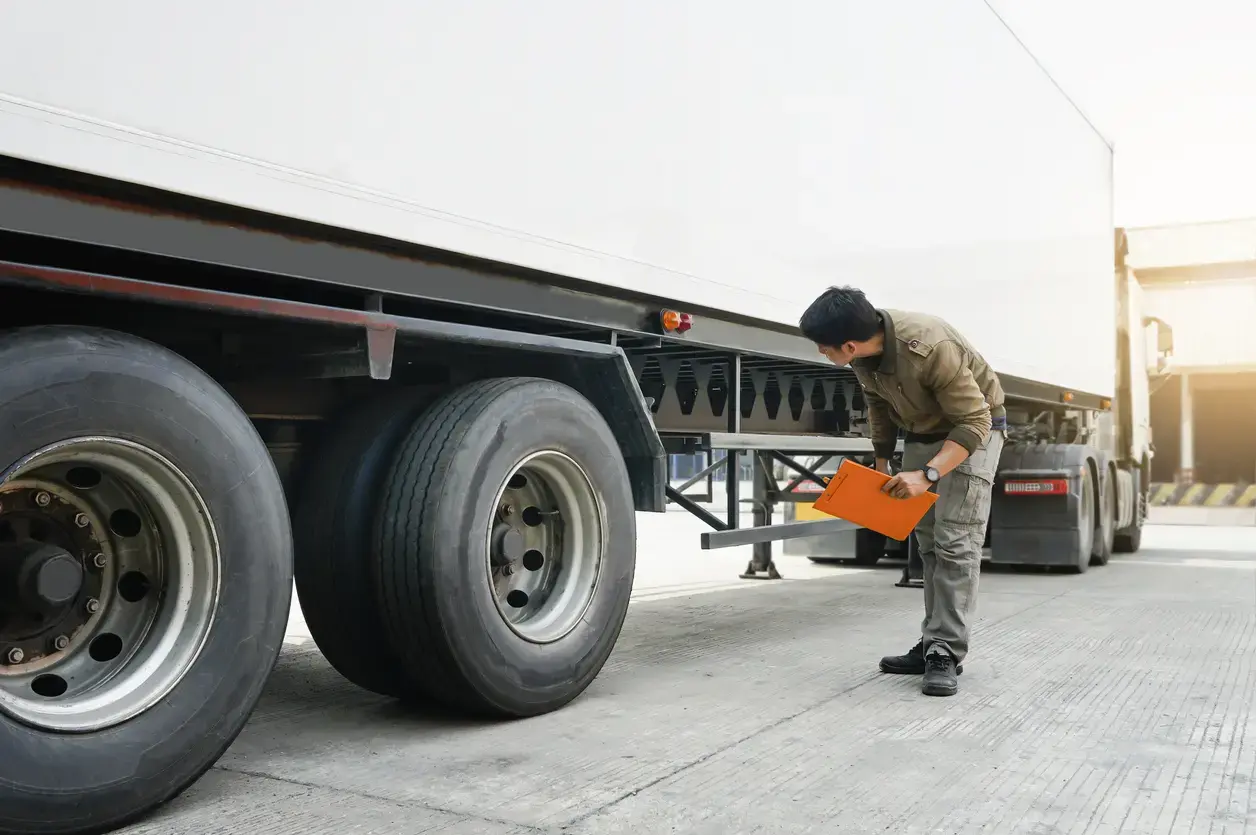Curb Weight vs Gross Weight: How They Impact Fuel Efficiency and Fleet Performance

Every vehicle pound counts when managing a fleet. The weight of your vehicles affects more than just braking, handling, and acceleration. It impacts fuel efficiency, safety, maintenance, compliance, sustainability, and performance.
Understanding vehicle weight measurements — curb weight and gross weight — is crucial for smart decision-making and effective fleet management. Let’s start by defining the specifics of curb weight and gross weight.
What Is Curb Weight?
Curb weight is the total weight of a vehicle with all standard equipment and fluids, including:
- Fuel
- Engine oil
- Coolant/antifreeze
- Transmission
- Brakes
- Power steering
- Windshield wiper fluids
Curb weight does not include passengers, cargo, or additional equipment. A simple way to think about curb weight is it’s the vehicle’s “ready-to-drive” weight, as if delivered straight from the manufacturer — how much it weighs at the curb, ready to go.
Knowing your vehicles’ curb weight gives you a baseline for:
- Choosing the right vehicle for each job
- Making decisions on fuel consumption and fuel budgeting
- Estimating payload capacity — the maximum amount of weight the vehicle can carry safely
- Ensuring compliance with manufacturer ratings
What Is Gross Weight?
Gross weight is the actual total weight of a vehicle when it’s loaded. It includes the curb weight plus the weight of passengers, tools, cargo, and any aftermarket additions. If a vehicle exceeds its gross weight limit, it’s illegal to operate.
Each vehicle also has a Gross Vehicle Weight Rating (GVWR). The GVWR, set by the manufacturer, is the maximum safe weight a vehicle can operate under. Exceeding gross weight or GVWR can lead to:
- Faster wear on brakes, tires, and suspension
- Reduced handling and braking efficiency
- Shortened vehicle lifespan
- Faster tire failure — if tires aren’t rated for the load (DOT tire regulations require commercial vehicles to use tires with proper load ratings)
- Potential fines or penalties
The Impact on Fuel Economy
Curb weight, gross weight, and fuel economy are closely linked. The heavier a vehicle is, the more fuel it needs to move. According to the U.S. Department of Energy, reducing just 100 pounds from a vehicle’s weight can improve fuel economy by about 1-2%. Across a fleet with multiple vehicles, those savings can quickly add up.
With that in mind, here are six simple ways to manage curb weight and gross weight more effectively — and in doing so, improve fuel economy, fuel savings, sustainability efforts, and overall fleet performance.
6 Tips for Managing Curb Weight and Gross Weight
1. Regularly Review Vehicle Loads
Remove nonessential tools, parts, roof racks/carriers, and cargo to keep within safe operating limits.
2. Use Lightweight Upfits and Components
Consider aluminum, high-strength steel, or composite upfit materials for lighter shelving, storage boxes, ladder racks, etc.
3. Right-Size Vehicles to the Job
Assign smaller, more fuel-efficient vehicles to less demanding tasks. Matching the right vehicle to the right task keeps your fleet leaner, safer, and more fuel-efficient.
4. Vehicle Replacement
When replacing vehicles, order lighter chassis, smaller and more efficient engines, or designs with lightweight body options where possible. Read more about determining the optimal vehicle replacement cycle here for more insights.
5. Monitor With Telematics
Use telematics for monitoring payloads and identifying overloaded vehicles to ensure compliance with gross weight limits. Explore the six next-gen telematics must-haves for fleets here.
6. Train Drivers
Educate drivers on how weight and load distribution affect handling, acceleration, braking, and fuel economy. Remind drivers to routinely unload tools, equipment, personal items, or materials they don’t need for the job at hand. Enforce load policies by standardizing the maximum allowed cargo per vehicle.
Getting Lighter: Curb Weight vs Gross Weight
Understanding and managing curb weight and gross weight enables you to run your fleet more effectively, thereby improving operational costs, fuel efficiency, safety, compliance, and overall performance. By closely monitoring vehicle weight and making targeted adjustments, such as using lighter equipment, removing excess cargo, or matching the right vehicle to the right job, you can achieve greater efficiency, improved performance, and long-term cost savings.
Want more weight-trimming tips? Read our blog: Weight Distribution for Fuel Efficiency.